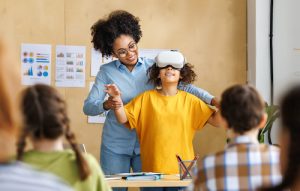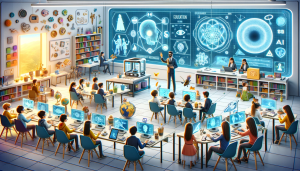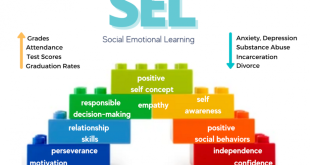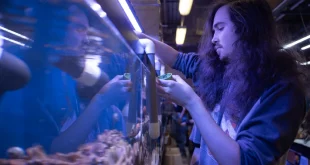The landscape of education is continuously evolving, driven by advances in technology, changes in societal needs, and a deeper understanding of how students learn best. As we look to the future, several key trends are emerging that promise to reshape the classroom experience for students and educators alike. This article explores these trends, highlighting how they may transform education in the coming years.
 1. Increased Integration of Technology
1. Increased Integration of Technology
Technology has already made significant inroads in education, but its influence is expected to grow even further. Classrooms of the future will likely be characterized by:
a. Blended Learning Environments
Blended learning combines traditional face-to-face instruction with online learning. This approach allows for personalized learning experiences, enabling students to learn at their own pace. For instance, platforms like Khan Academy and Coursera provide resources that students can access outside the classroom, freeing up in-class time for interactive discussions and hands-on activities.
b. Virtual and Augmented Reality
Virtual Reality (VR) and Augmented Reality (AR) technologies are poised to create immersive learning experiences that were previously unimaginable. Students may take virtual field trips to historical sites or explore complex scientific concepts through interactive simulations. These technologies can enhance engagement and retention by providing real-world context to theoretical knowledge.
c. Artificial Intelligence
AI has the potential to revolutionize education by providing personalized learning experiences. Intelligent tutoring systems can analyze student performance in real-time and adjust curricula accordingly. AI can also assist teachers by automating administrative tasks, allowing them to focus more on instruction and student interaction.
2. Emphasis on Social and Emotional Learning (SEL)
The recognition of the importance of social and emotional learning is gaining traction in educational settings. As academic rigor increases, so does the need for students to develop skills that contribute to their overall well-being and success.
a. Holistic Education Approaches
Future classrooms will prioritize a holistic approach that integrates SEL into the curriculum. This means teaching students not only academic skills but also emotional regulation, empathy, and interpersonal skills. Schools may implement programs that focus on mindfulness, resilience, and collaboration, preparing students for the complexities of modern life.
b. Mental Health Resources
As awareness of mental health issues grows, schools are likely to provide more resources and support for students. This could include access to counselors, mental health education, and peer support programs, ensuring that students have the tools they need to navigate emotional challenges.
3. Personalized Learning
Personalized learning is becoming a central theme in educational reform. Recognizing that each student learns differently, educators are adopting strategies that cater to individual needs and preferences.
a. Competency-Based Education
In competency-based education, students progress through their learning based on their ability to demonstrate mastery of a subject rather than adhering to a fixed schedule. This approach allows students to spend more time on challenging topics while advancing quickly through areas where they excel.
b. Data-Driven Decision Making
The use of data analytics in education enables educators to identify trends and patterns in student performance. By analyzing this data, teachers can tailor instruction to meet the specific needs of their students, ensuring that no one is left behind.
4. Collaborative Learning Spaces
The physical design of classrooms is changing to foster collaboration and creativity among students. Future classrooms will likely feature:
a. Flexible Learning Environments
Traditional rows of desks are giving way to flexible seating arrangements that encourage group work and collaboration. Classrooms may include various spaces, such as breakout areas, maker spaces, and quiet zones, allowing students to choose the environment that best suits their learning style.
b. Community and Global Connections
With technology enabling communication across borders, future classrooms will likely emphasize global collaboration. Students may work on projects with peers from different countries, gaining diverse perspectives and enhancing their understanding of global issues.
5. Lifelong Learning Mindset
As the world changes rapidly, the need for continuous learning is becoming increasingly important. The future of education will promote a mindset of lifelong learning, encouraging individuals to pursue knowledge and skills throughout their lives.
a. Microcredentialing and Badging
Microcredentialing allows learners to earn certifications for specific skills or competencies. These bite-sized credentials can be more flexible and accessible than traditional degrees, enabling individuals to demonstrate their skills to employers effectively.
b. Focus on Critical Thinking and Adaptability
Future education will prioritize developing critical thinking, problem-solving, and adaptability skills. As automation and AI reshape the job market, students will need to be equipped with the ability to think creatively and respond to new challenges.
6. Teacher Empowerment and Professional Development
The role of teachers is evolving, and their professional development will be vital in shaping the future of education. Educators will need ongoing support and training to adapt to new teaching methods and technologies.
a. Collaborative Professional Development
Future professional development will emphasize collaboration among educators. Teachers will work together to share best practices, resources, and strategies for addressing diverse student needs. This collaborative approach fosters a culture of continuous improvement and innovation.
b. Embracing Technology
As technology becomes more integrated into the classroom, teachers will need training on how to effectively use new tools and resources. Professional development programs will focus on equipping educators with the skills to leverage technology to enhance learning outcomes.
 Conclusion
Conclusion
The future of education is poised to be dynamic and multifaceted, driven by technological advancements, a focus on social and emotional learning, and a commitment to personalized, collaborative learning experiences. As we embrace these trends, it is essential to prioritize inclusivity, flexibility, and adaptability in educational practices.
Preparing students for the complexities of the future requires a holistic approach that nurtures not only academic skills but also emotional intelligence and critical thinking. By embracing these changes, we can create classrooms that empower students to thrive in an ever-evolving world, fostering a love of learning that lasts a lifetime. The journey ahead is exciting, and by working together, educators, parents, and communities can shape the future of education for generations to come.


